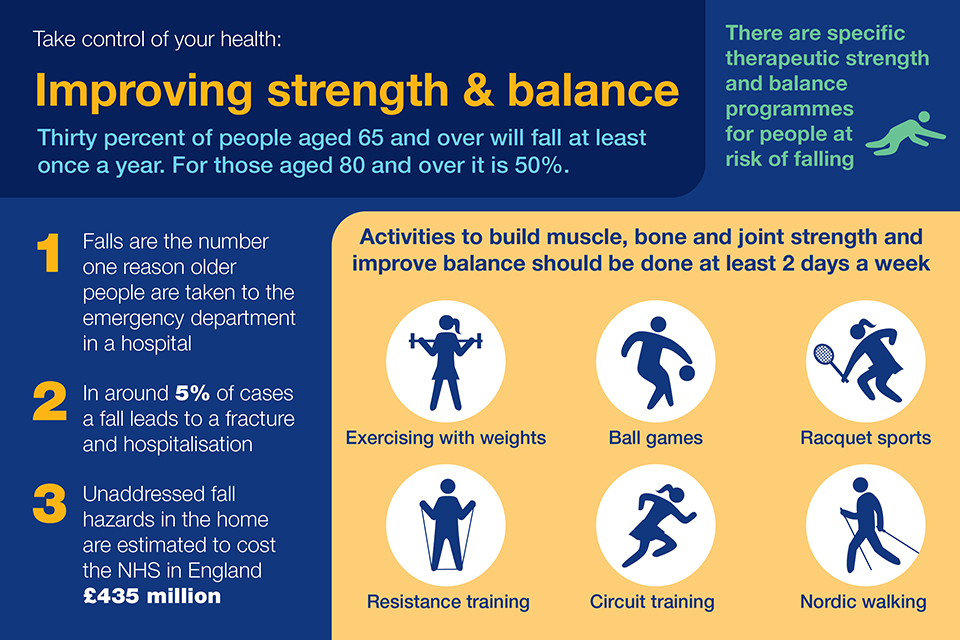4 Easy Facts About Dementia Fall Risk Shown
4 Easy Facts About Dementia Fall Risk Shown
Blog Article
The Definitive Guide to Dementia Fall Risk
Table of ContentsThe 25-Second Trick For Dementia Fall RiskThe Ultimate Guide To Dementia Fall Risk4 Easy Facts About Dementia Fall Risk ExplainedThe Facts About Dementia Fall Risk Revealed
An autumn danger assessment checks to see how likely it is that you will fall. It is mostly provided for older adults. The assessment generally includes: This includes a collection of inquiries regarding your total wellness and if you've had previous falls or issues with equilibrium, standing, and/or walking. These devices evaluate your toughness, equilibrium, and gait (the way you stroll).STEADI includes testing, analyzing, and intervention. Interventions are recommendations that might reduce your danger of falling. STEADI consists of 3 actions: you for your danger of dropping for your risk aspects that can be enhanced to attempt to avoid drops (for example, balance problems, impaired vision) to reduce your danger of falling by using effective methods (for instance, providing education and learning and resources), you may be asked numerous inquiries consisting of: Have you fallen in the previous year? Do you feel unstable when standing or strolling? Are you stressed about dropping?, your service provider will check your toughness, balance, and stride, using the complying with loss analysis devices: This test checks your stride.
If it takes you 12 seconds or even more, it might imply you are at greater danger for a loss. This examination checks stamina and equilibrium.
The settings will certainly get more difficult as you go. Stand with your feet side-by-side. Relocate one foot midway forward, so the instep is touching the huge toe of your other foot. Relocate one foot fully before the other, so the toes are touching the heel of your various other foot.
A Biased View of Dementia Fall Risk
A lot of drops take place as an outcome of several contributing variables; consequently, taking care of the danger of dropping begins with recognizing the elements that contribute to fall risk - Dementia Fall Risk. A few of the most pertinent danger elements consist of: History of prior fallsChronic medical conditionsAcute illnessImpaired gait and equilibrium, reduced extremity weaknessCognitive impairmentChanges in visionCertain risky medications and polypharmacyEnvironmental elements can also boost the threat for falls, consisting of: Poor lightingUneven or damaged flooringWet or slippery floorsMissing or harmed handrails and order barsDamaged or improperly equipped tools, such as beds, mobility devices, or walkersImproper use of assistive devicesInadequate supervision of individuals residing in the NF, including those who show hostile behaviorsA effective fall danger monitoring program needs an extensive clinical assessment, with input from all participants of the interdisciplinary team

The care strategy should also include treatments that are system-based, such as those that promote a safe atmosphere (proper lights, hand rails, order bars, etc). The efficiency of the interventions need to be evaluated periodically, and the care plan revised as essential to show modifications in the autumn danger assessment. Carrying out a fall risk administration system utilizing evidence-based linked here ideal method can lower the occurrence of drops in the NF, while limiting the potential for fall-related injuries.
The Best Strategy To Use For Dementia Fall Risk
The AGS/BGS guideline advises screening all grownups aged 65 years and older for fall risk yearly. visit site This screening includes asking clients whether they have actually dropped 2 or even more times in the previous year or sought medical interest for a loss, or, if they have actually not dropped, whether they feel unstable when strolling.
People that have dropped when without injury needs to have their balance and stride reviewed; those with gait or balance irregularities should receive added evaluation. A history of 1 autumn without injury and without gait or balance issues does not call for further analysis past continued annual fall threat testing. Dementia Fall Risk. An autumn threat assessment is required as part of the Welcome to Medicare assessment

8 Simple Techniques For Dementia Fall Risk
Documenting a falls history is one of the quality indications for fall prevention and management. Psychoactive drugs in particular are independent predictors of drops.
Postural hypotension can often be eased by minimizing the dosage of blood pressurelowering medications and/or quiting medicines that have orthostatic hypotension as an adverse effects. Use above-the-knee assistance hose pipe and copulating the head of the bed boosted may likewise reduce postural reductions in blood pressure. The advisable aspects of a fall-focused physical exam are displayed in Box 1.

A yank time better than or equal to 12 seconds recommends high autumn danger. The 30-Second Chair Stand test analyzes lower extremity stamina and balance. Being not able to stand from a chair of knee elevation without utilizing one's arms shows enhanced fall risk. The 4-Stage you could try this out Equilibrium examination assesses static balance by having the individual stand in 4 settings, each gradually extra challenging.
Report this page